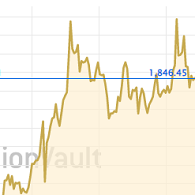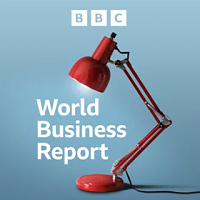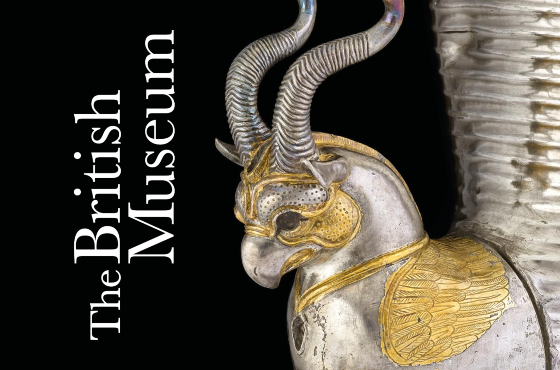You, Investing vs. the Institutions
From 9/11 to 20-second stock holding...
On 10 JULY 2001 an Arizona-based FBI field agent called Ken Williams
filed a warning with his bosses in
Washington and New York, writes Tim Price at Price
Value Partner.
It was a six-page document that began as
follows:
"The
purpose of this communication is to advise the Bureau and New York of the possibility of a coordinated
effort by USAMA BIN LADEN (UBL)
to send students to the United States to attend civil aviation universities and colleges."
As Steven Johnson,
author of 'Where Good Ideas Come From' points out, this was the infamous "Phoenix memo", in which
Williams had been compelled to draft
his warning after detecting an unusually high number of people of "investigative interest" who had
signed up at various flight schools
in Arizona.
Among the people Williams had interviewed was Zakaria Mustapha
Soubra, an aeronautical
engineering student on an F-1 visa from the UK. Soubra had pictures of bin Laden at his home. But after
sitting on Williams' memo for
three weeks, the agency assigned it to an analyst, who labelled it "routine".
One month after Ken Williams
filed his memo, Zacarias Moussaoui enrolled at Pan Am International Flight Academy at St Paul,
Minnesota, where he started training to
fly a Boeing 747-400 on a simulator. Onlookers grew suspicious after Moussaoui paid his entire $8,300
fee in cash, and claimed to have
no interest in ever flying a real plane. Pan Am contacted the FBI. The FBI in Minnesota then tried
frantically to obtain a search
warrant to examine files on Moussaoui's laptop. That search warrant would not be granted until the
afternoon of September 11,
2001.
Our point is not to criticise the FBI or its role in US homeland security
– they're tasked with a huge,
difficult and complex job. But it is to highlight that in large organisations, things get missed. It
wasn't that the FBI was unaware
of a possible plot involving foreign students and aircraft – to their very great credit, an agency
staffer reported his concerns. But
the agency was too big, or too bureaucratic, to act sufficiently quickly on that
information.
The history of
the financial crisis that erupted in 2007/8 and which continues to cast a long shadow over global
monetary policy, fiscal policy,
interest rates and stimulus-out-of-desperation, is a history of failing institutions. Central banks and
government regulatory agencies
conspicuously failed to understand, oversee or control commercial and investment banks during a historic
property and credit bubble.
And banking institutions, as we know only too well, by and large completely failed to manage their own
balance sheets and risk
exposures. Worse still, the markets have become hijacked by institutional entities with little or no
interest in investing for the
longer term.
Happily, that could create some great investment opportunities for
us in the years
ahead.
Consider the following astonishing statistic. Michael Hudson, a
professor at the University of
Missouri, has suggested that the average holding period for a US stock is 22 seconds. The average
foreign currency investment lasts
for 30 seconds. The markets have become playgrounds for what are called High Frequency Traders, in most
cases computer-driven
algorithmic models.
The average holding of period for US stocks has collapsed.
From the 1940s to the 1960s,
the average holding period of US stocks – in months – was between 60 and 100. Within the space of a few
decades that average holding
period has gone from many months to just a few seconds.
By the same token,
Dollar trading volumes vs GDP have
exploded. The 1929 US stock market peak coincided with a peak in this ratio: of over 100%. But having
been well below that level for
the rest of the last century, Dollar trading volumes relative to GDP in the US ballooned higher in the
1990s, and from 1999 vaulted
over that 1929 level to over 400% in recent years.
We're no Keynesians, but we
will grant that the old
economist had something to say on the subject of speculation:
"Speculators may
do no harm as bubbles on a
steady stream of enterprise. But the position is serious when enterprise becomes the bubble on a
whirlpool of speculation. When the
capital development of a country becomes a by-product of the activities of a casino, the job is likely
to be ill-done."
Here's the good news
We happen to think there's something positive
in these otherwise malign
trends. We're not traders either, and we have no interest in the minute-to-minute (and now
second-to-second) gyrations of the market.
Trading is best left to the alleged professionals. But it may well be that with all these computers and
algorithms trading against
each other solely with a view to getting an edge over a time period that might only be a few seconds
long, they give rise to
occasional opportunities for genuine value investors to prosper, particularly when favoured stocks get
driven down to unusual levels.
These systems are not interested whatever in longer term value, but only in short-term speculation and
accumulating multiple numbers
of relatively tiny trading profits. They have reduced the market, in their terms, to a casino in all but
name. Rather than be buffeted
about by the 'noise' players in the high frequency trading arena, we'd rather stay out of the way and
bide our time.
Jesse Livermore was a famous stock trader during the early 20th Century, who made and lost
several fortunes during a
turbulent career. But he had a rare insight into the psychology of successful investing:
"The big money is
made by the sittin' and the waitin', not the thinking. After spending many years in Wall Street and
after making and losing millions
of Dollars I want to tell you this: It never was my thinking that made the big money for me. It always
was my sitting."
As a private investor you have one enormous advantage over the professional trader. You can
invest when you like – and
you can sit on your hands for as long as you like. The professional trader, especially if employed by an
investment bank or hedge
fund, is more or less compelled to trade. We alluded to this disparity in our recent commentary 'The
smartest guys in the room'. As
the US author and asset manager Jim O'Shaughnessy puts it,
"Markets change
minute by minute. Human nature
barely changes millennium by millennium. There's your edge."
Or as the popular
Liverpool beat music combo
'Frankie' once advised: Relax.
In 1972, the great 'value' investor and our
preferred investment guru,
Benjamin Graham, wrote:
"The speculative public is incorrigible. In financial
terms it cannot count beyond
three. It will buy anything, at any price, if there seems to be some 'action' in progress."
Be careful what
you wish for. The 1990s' wave of disintermediation of bankers and full-service brokers brought with it
stock trading in real time.
Gone were the days when you could only access stock prices by telephoning your broker or waiting to read
the market reports in the
next day's Financial Times. Thanks to firms like Charles Schwab, the stock market could now be played
like a computer game. Stock
prices became animated, visual and constantly changing: green for up, red for down.
We're not Luddites, and
we happily concede that there can be no uninventing the web. The point is that the immediate
gratification of online share dealing is
not an unalloyed boon to investors. It comes at a price – the price being the fact that our brains are
insufficiently evolved to deal
dispassionately with losses visible in real time. Our brains are also hard-wired to practise pattern
recognition and prediction. This
served our ancestors well when we roamed the savannah searching for food and learning to avoid
predators. It serves us as investors
less well when we 'see' patterns in stock prices that aren't really there, or when the amygdala in our
brain, the seat of our 'fight
or flight' response, is stimulated almost beyond endurance by a loss-making online
transaction.
Using MRI
scans, leading brain researchers including Jordan Grafman at the National Institutes of Health and Hans
Breiter of Harvard Medical
School have demonstrated that the more frequently people are told that they are losing money, the more
active their amygdala becomes.
Jason Zweig, a columnist for the Wall Street Journal, observes:
"There can be
no doubt that online trading,
by displaying stock prices in a dynamic visual format that can directly activate the fear centre of the
brain, made losing money more
viscerally painful than it had ever been before. Once the arrows (denoting stock prices) turned red,
investors could not help but
panic. And the red arrows were everywhere: on their computer screens and financial television programmes
in pubs and restaurants, bars
and barbershops, brokerage offices and taxicabs. Investors no longer had the option of simply not
opening the newspaper. Technology
had turned financial losses into an inescapable, ambient presence."So what's the solution?
The business of
investing is not meant to be exciting. Rather than falling prey to sensation-seeking behaviour, the
practical response to the
temptations of the digital age is almost comically simple. Just turn the computer off.
To some, depriving
oneself of trading info will be unthinkable. But consider Nassim Taleb's retired dentist. Showcased in
Taleb's excellent book, 'Fooled
by Randomness', our hypothetical friend is destined to earn, on average, 15% per annum from his
portfolio, with an associated
volatility (annualised standard deviation of return) of 10%.
If our retired
friend monitors his portfolio in
real time, however, the (entirely random) short-term oscillations of the market, and therefore of his
portfolio, are bound to trigger
extreme anxiety. Depending on the frequency with which he observes his portfolio, our friend can
precisely control the extent of
heartache and distress to which he will expose himself. The following table makes the risk/reward
outlook quite clear.
Frequency of monitoring the portfolio Probability of pleasurable outcome
1 second
50.02%
1 minute 50.17%
1 hour 51.30%
1 day 54%
1 month
67%
1 quarter
77%
1 year 93%
Source: 'Fooled by Randomness' by Nassim Nicholas
Taleb.
The lesson is
clear. Too much portfolio monitoring can be injurious to your health. If Taleb's dentist simply
moderates the frequency with which he
checks his portfolio, he will boost his chances of incurring a positive emotional outcome from that
monitoring. And note that nothing
changes about the composition of his portfolio – only the frequency with which he checks it.
The same holds
when it comes to consuming financial news. The continuing enhancement of digital communication
technologies is a double-edged sword.
It means that absorbing financial and investment information from the web, or from the world's various
news media or cable channels,
is like drinking from a fire hose. Here is one of the funniest things ever said by an asset
manager:
"Whenever I go into a brokerage office and see that the brokers are all watching CNBC, it feels like
walking into the Mayo Clinic, and
finding that all the doctors are watching 'General Hospital'."
Again, the
solution is plain. Whether it's a
TV screen or a computer screen, just turn it off.













 Email
us
Email
us
